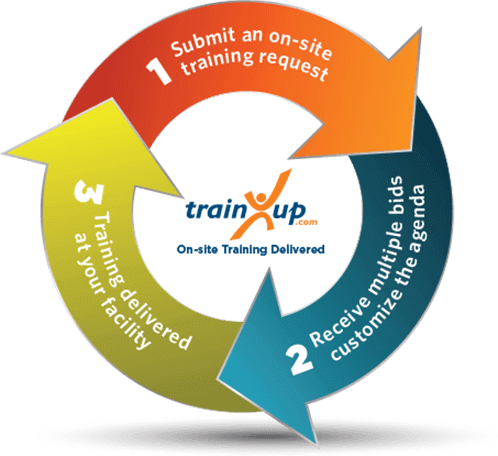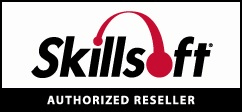
ASP.NET Training Your Way
Or Choose From 55 Information Technology Sub-Categories
- Adobe Training
- ASP.NET Training
- AutoCAD Training
- AutoDesk Training
- Basic Computer Skills Training
- Big Data Analytics Training
- Blockchain Training
- C-C++ Training
- Cisco Training
- Citrix Training
- Cloud Computing Training
- CompTIA Training
- Crystal Reports Training
- Database Training
- DevOps Training
- Disaster Recovery Training
- Dynamics CRM Training
- Google Training
- Graphic Design Training
- IBM Training
- Identity Management Training
- ISC2 Training
- IT Project Management Training
- ITIL Training
- Java Training
- Macintosh Training
- Microsoft .NET Training
- Microsoft Certification Training
- Microsoft Exchange Training
- Microsoft Office Training
- Microsoft SharePoint Training
- Mobile Development Training
- NetApp Training
- Networking Training
- Novell Training
- Oracle Training
- PC Support Training
- Programming Training
- Red Hat Training
- SAP Training
- Scrum - Agile Training
- Security Training
- SEO Training
- SQL Server Training
- SUN Microsystems Certified Training
- System Administration Training
- Testing - QA-QC Training
- UNIX - Linux Training
- Virtualization Training
- Visual Basic Training
- VMWare Training
- VoIP - Telephony Training
- Web Development Training
- Windows Server Training
- XML - Web Services Training
ASP.NET Training Courses and Seminars
TrainUp.com is your one-stop source for the best virtual asp.net training and live courses nationwide. Start your search now and browse among 19 live instructor-led asp.net training classes near you, from the industry's best asp.net training companies such as SkillSoft, BizLibrary, and Hands On Technology Transfer, Inc. (HOTT) TrainUp.com also lists more than 113 self-paced online asp.net training courses, micro-learning videos, and eLearning bundles. If you have a team to train, we can conduct a course just for you. Check out our onsite on-site asp.net training page to request a custom virtual or in-person training quote today.
Request ASP.NET On-Site Training. We bring the best instructors to you.
TrainUp.com is your one-stop source for the best virtual asp.net training and live courses nationwide. Start your search now and browse among 19 live instructor-led asp.net training classes near you, from the industry's best asp.net training companies such as SkillSoft, BizLibrary, and Hands On Technology Transfer, Inc. (HOTT) TrainUp.com also lists more than 113 self-paced online asp.net training courses, micro-learning videos, and eLearning bundles. If you have a team to train, we can conduct a course just for you. Check out our onsite on-site asp.net training page to request a custom virtual or in-person training quote today.
Live Training
(2 Classes)
Self-Paced Courses
(90 eLearning Courses)
& Video Collections
(26 Bundles)
Up to 37% off Training
55340 Developing ASP.NET Core Web Applications
PL-400T00 Microsoft Power Platform Developer
Web Applications Development with Microsoft .NET Framework 4 using Visual Basic 2010
General .NET Video Collection
Microsoft .NET Framework 4: Web Application Development with Visual C# 2010
Visual Studio Video Collection
Clean Coding and Defensive Programming Techniques
Windows Communication Foundation Development in C# with Microsoft .NET Framework (70-513)
Microsoft .NET Framework 4: Windows Application Development with Visual C# 2010
Advanced Windows Store App Development Using C# and XAML
Advanced Windows Store App Development Using C# and XAML in Visual Studio 2013
The Programmer's Guide to HTML5 Programming with JavaScript and CSS3
The Complete Guide to Developing ASP.NET MVC Web Applications
Microsoft .NET Framework 4: Web Application Development with Visual C# 2010 Part 2
Microsoft .NET Framework 4: Web Application Development with Visual C# 2010 Part 1
C# Programming
Web Applications Development with Microsoft .NET Framework 4 using Visual Basic 2010 Part 2
Microsoft .NET Framework 4: Accessing Data with Visual Basic 2010
Application Development with Node.js and the .NET Framework
Working with ASP.NET MVC 5 Applications
Microsoft Azure and Web Services
Accessing Data with Microsoft .NET Framework for C# Developers (70- 516)

Get Up to 20% off Live & Online Training Courses

We’ll Conduct The Course Just For Your Team

Get Up to 20% off eLearning
SCORM /AICC compliant. Upload content to your LMS
We’ll help customize your curriculum. Send us a request today to preview our entire online training catalog

Customized eLearning Solutions
ILT /Virtual Live to eLearning MicroLearning Video Development Mobile Learning Gamified Learning Flash to HTML5 Conversion
TrainUp.com is your one-stop source for the best virtual asp.net training and live courses nationwide. Start your search now and browse among 19 live instructor-led asp.net training classes near you, from the industry's best asp.net training companies such as SkillSoft, BizLibrary, and Hands On Technology Transfer, Inc. (HOTT) TrainUp.com also lists more than 113 self-paced online asp.net training courses, micro-learning videos, and eLearning bundles. If you have a team to train, we can conduct a course just for you. Check out our onsite on-site asp.net training page to request a custom virtual or in-person training quote today.

Request ASP.NET On-Site Training. We bring the best instructors to you.
ASP.NET Courses and Workshops
ASP.NET is one of the centerpieces of the Microsoft .NET Framework and provides the infrastructure for an easily developed and dynamic .NET Web application. ASP.NET is not only the successor to Microsoft Active Server Pages (ASP), it is a unified Web development platform that provides the services necessary for developers to build enterprise Web applications. ASP.NET provides great enhancements over ASP and includes many new features.
Related ASP.NET Training
- ASP.NET training in New York, NY
- ASP.NET training in Los Angeles, CA
- ASP.NET training in Chicago, IL
- ASP.NET training in Houston, TX
- ASP.NET training in Philadelphia, PA
- ASP.NET training in Phoenix, AZ
- ASP.NET training in San Antonio, TX
- ASP.NET training in San Diego, CA
- ASP.NET training in Dallas, TX
- ASP.NET training in San Jose, CA
- ASP.NET training in Indianapolis, IN
- ASP.NET training in Jacksonville, FL
- ASP.NET training in San Francisco, CA
- ASP.NET training in Columbus, OH
- ASP.NET training in Charlotte, NC
- ASP.NET training in Detroit, MI
- ASP.NET training in Seattle, WA
- ASP.NET training in Denver, CO
- ASP.NET training in Boston, MA
- ASP.NET training in Oklahoma City, OK
- ASP.NET training in Las Vegas, NV
- ASP.NET training in Kansas City, MO
- ASP.NET training in Atlanta, GA
- ASP.NET training in Toronto, ON
- ASP.NET training in Vancouver, BC
ASP.NET is a part of the .NET framework and is used to develop dynamic web applications. Courses in ASP.NET cover important functions and uses of ASP.NET, such as reusable code, deploying an application on the server, as well as testing and debugging a web application.
.NET is a software development framework that can be used to create web applications. Training courses on .NET explore how developers can use .NET to create dynamic mobile, desktop and web applications that run on Windows.
TrainUp.com is your one-stop source for the best .NET training courses nationwide. Start your search now and browse more than 25 live instructor-led .NET training classes near you, from the industry's best .NET training companies such as SkillSoft, Software Skills Training, Inc., and Logical Imagination. TrainUp.com also lists more than 93 self-paced online asp training courses, micro-learning videos, and eLearning bundles. If you are in need of group .NET training solutions for your team, visit our on-site .NET training page to request a training quote today. We will bring the best instructor to you!
asp.net is not at all difficult to learn. In fact, it is very easy compared to framework of other languages. However, you should first have a solid understanding of C#. Also, as a general estimate, if you are comfortable working with HTML, CSS, or basic web technologies, then you should be able to learn ASP.NET in just under two months at a level where you can build a basic functional website. However, this rough estimate that assumes you are getting a significant amount of practice time, and have some basic prior knowledge of the aforementioned languages.
.NET is not difficult to learn if you already have an understanding of another programming language, preferably C# or VB.NET. Furthermore, If you are planning to learn web programming, it is recommended to first learn the basics of a web development language like HTML or CSS. .NET is essentially a huge collection of pre-programmed libraries (APIs), which equip you with relevant programming tools, languages etc. to carry out desired tasks. It may seem intimitating at first, but with practice you can master .NET and use this beneficial tool for today's web developer.
The difference between .NET and ASP.NET is that .NET is a software development framework, while ASP.NET is a single part of the larger .NET framework and is used to create dynamic web pages.
Like with any Microsoft Certification in 2019 and beyond, to become MCSD certified, you will first need to research the various certifications and decide with certification path is right for you. Microsoft has retired some certifications, but has also released new role-based certifications that you may wish to consider as options. Once you have decided on your certification path, you will want to complete the associated certification prep course. It is important to note that for many of the MCSD certification exams, Microsoft recommends a minimum of 1 to 2 years of working experience prior to seeking certification.
MCSA, MCSE, and MCSD exams usually cost $165 (US) to sit. However, training and exam prep is highly recommended prior to pursuing the certification. Prep courses for MCSA, MCSE, and MCSD can range in price from $400 Elearning bundles to $6,500 classroom prep courses.
As of 2019 Microsoft certifications no longer expire! Starting in February of 2019 Microsoft made big changes to it's certification program. For example, in years previous, Microsoft Certified Solutions Expert (MCSE) certifications were only valid for three years, and Microsoft Certified Solutions Developer (MCSD) certifications required recertification after just two years. Now however, Microsoft certifications are valid for life!
Join The 50,000+ Companies That Have Purchased Training from TrainUp.com
-
50K+ Companies Trained
Including 90% Of Fortune 500 Companies Have Purchased Training With TrainUp.com
-
300K+ Courses & Videos
Live Instructor-Led (Classroom & Virtual), Self-Paced E-learning & Custom OnSite Training Solutions From Leading Training Providers
-
800+ Expert Instructors
Industry-Leading Subject Matter Experts (SMEs).Tenured &
Award-Winning Instructor Network
Get the latest industry news, recommended courses, & promotions from TrainUp.com sent straight to your inbox.


















